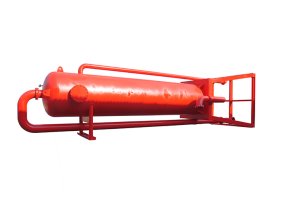Understanding Mechanical Seal Dimensions A Comprehensive Guide
Mechanical seals are crucial components in various industrial applications, providing effective sealing solutions to prevent leaks of fluids and gases from pumps, compressors, and other rotary equipment. The performance and longevity of a mechanical seal largely depend on its dimensions and design. In this article, we will explore the key dimensions related to mechanical seals, their importance, and how they impact the overall efficiency of equipment.
What Are Mechanical Seals?
Mechanical seals consist of two primary components the rotating element, which is typically attached to a shaft, and the stationary element, which is fixed to the housing. These elements are pressed together to create a seal, preventing the escape of fluids and maintaining pressure within the system. Properly designed mechanical seals reduce wear, minimize leakage, and can withstand a variety of operating conditions.
Key Dimensions of Mechanical Seals
1. Seal Face Diameter The diameter of the seal face is one of the most critical dimensions. It determines the area available for sealing and directly influences the load and pressure distribution across the seal. A larger diameter often provides a more effective seal but may also lead to increased costs and manufacturing complexity.
2. Seal Face Width The width of the seal face affects the contact area between the two mating surfaces. A wider seal face can better accommodate irregularities in surface flatness and contribute to a longer service life. However, a balance must be struck, as excessively wide faces can generate more friction and heat.
3. Overall Length The overall length of the mechanical seal is essential for ensuring proper installation and function. It includes both the rotating face and stationary components. Accurate measurement is necessary to avoid misalignment, which can cause premature failure or leakage.
4. Seal Spring Loaded Many mechanical seals utilize a spring mechanism to maintain contact pressure between the seal faces. The length and configuration of these springs are crucial as they must exert enough force to ensure tight sealing while allowing for thermal expansion and wear over time.
mechanical seal dimensions
5. Gland Dimensions The gland is the housing component where the mechanical seal is installed. Proper gland dimensions are vital for ensuring the correct fit of the seal. An ill-fitting gland can lead to operational issues, including misalignment and reduced sealing capabilities.
6. Shaft Diameter The diameter of the shaft to which the mechanical seal is fitted must be accurately specified. The seal must fit snugly on the shaft to prevent fluid leakage. Shaft wear can also affect the seal\'s performance, underscoring the need for regular maintenance and inspection.
Importance of Accurate Dimensions
The dimensions of mechanical seals directly influence their performance, reliability, and lifecycle costs. Incorrectly sized seals can lead to leaking systems, increased maintenance costs, and unplanned downtime, which can be detrimental to any industrial operation. Engineers must pay close attention to the specifications when designing or replacing mechanical seals to ensure compatibility with existing equipment and optimal operation.
Custom Dimensions for Specific Applications
In some cases, standard mechanical seal dimensions may not meet the specific requirements of a particular application. Custom seals can be engineered to precise dimensions, catering to unique operating conditions such as extreme temperatures, pressures, or corrosive environments. By tailoring the dimensions and materials, manufacturers create seals that enhance performance and extend service life.
Conclusion
Understanding mechanical seal dimensions is vital for maintaining the efficiency and reliability of industrial systems. Proper dimensions ensure effective sealing, reduce leakage, and minimize operational disruptions. As technology advances, manufacturers continue to develop innovative solutions that meet the diverse needs of various applications. Whether dealing with standard or custom seals, attention to detail in dimensioning can make a significant difference in performance and longevity, underscoring the importance of mechanical seals in modern engineering and manufacturing processes.
 Linear Motion Shale Shaker In Drilling Rig
Linear Motion Shale Shaker In Drilling Rig  Oilfield Mud Cleaner
Oilfield Mud Cleaner  Drilling Fluid Decanter Centrifuge
Drilling Fluid Decanter Centrifuge  Drilling Mud Desander
Drilling Mud Desander  Hydrocyclone Desilter
Hydrocyclone Desilter  Centrifugal Pump/Centrifugal Mud Pump
Centrifugal Pump/Centrifugal Mud Pump  Shear Pump
Shear Pump  Jet Mud Mixer
Jet Mud Mixer  Horizontal Mud Agitator
Horizontal Mud Agitator  Constant Pressure Drilling Fluid Mud Gas Separator
Constant Pressure Drilling Fluid Mud Gas Separator  Mud Gun
Mud Gun  Mud Tank
Mud Tank  Solids Control System Vacuum Degasser
Solids Control System Vacuum Degasser  Flare Ignition Device
Flare Ignition Device  Diesel Tank
Diesel Tank  Submersible Slurry Pump
Submersible Slurry Pump 





































